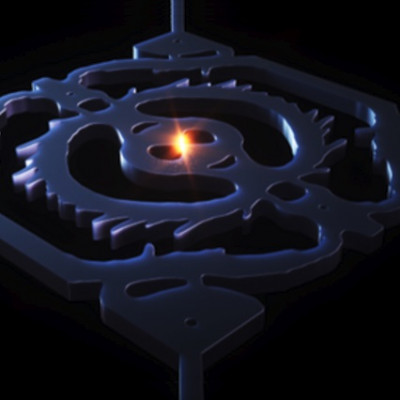
2022-11-04
Visited : 2231
Researchers from the NanoPhoton Center at DTU have developed a nanostructure which compresses the light so that it becomes 10,000 times thinner than a human hair. This is a fundamental scientific breakthrough and can be important for multiple fields, including energy-efficient computers and quantum technology.
Until recently, it was widely believed among physicists that it was impossible to compress light below the so-called diffraction limit (see fact box), except when using metal nanoparticles, which unfortunately also absorb light. It therefore seemed impossible to compress light strongly in dielectric materials such as silicon, which are key materials in information technologies and come with the important advantage that they do not absorb light. Interestingly, it was shown theoretically already in 2006 that the diffraction limit also does not apply to dielectrics. Still, no one has succeeded in showing this in the real world, simply because it requires such advanced nanotechnology that no one has been able to build the necessary dielectric nanostructures.
A research team from DTU has succeeded in designing and building a structure, a so-called dielectric nanocavity, which concentrates light in a volume that it is 12 times below the diffraction limit – inside a dielectric material. The result is ground-breaking in optical research and has just been published in Nature Communications.
"Although computer calculations show that you can concentrate light in a point that is infinitely small, this only applies in theory. The actual results are limited by how small details can be made, for example, on a microchip," says Marcus Albrechtsen, PhD-student at DTU Electro and first author of the new article. He continues:
“We programmed our knowledge of real photonic nanotechnology and its current limitations into a computer. Then we asked the computer to find a pattern that collects the photons in an unprecedentedly small area in a so-called nanocavity – and which we were also able to build in the laboratory.”
Optical nanocavities are structures that are specially designed to retain light so that it does not propagate as we are used to, but instead is thrown back and forth, in the same way as if you put two mirrors facing each other. The closer you place the mirrors to each other, the more intense the light between the mirrors becomes. For this experiment, the researchers have designed a so-called bowtie structure, which, due to its special shape, is particularly effective at squeezing the photons together.
Interdisciplinary efforts and excellent methods
The nanocavity is made of silicon, which is the dielectric material on which most advanced modern technology is based. The material for the nanocavity was developed in the special cleanroom laboratories at DTU and the patterns on which the cavity is based are optimized and designed using a unique method, so-called topology optimization, which was developed at DTU. It was originally developed to design bridges and aircraft wings but is now also used for nanophotonic structures. (Read more about how topology optimization is used to design an airplane wing).
Important breakthrough for energy-efficient technology
The new discovery could be decisive for the development of revolutionary new technology that can reduce the amount of energy-guzzling components in our data centers, computers, telephones, etc.
The energy consumption for computers and data centers continues to grow, and there is a need for more sustainable chip architectures that use less energy. This can be achieved by replacing the electrical circuits with optical components. The researchers' vision is to use the same division of labor between light and electrons as is used for the Internet, where light is used for communication and electronics for data processing. The only difference is that both functionalities must be built into one and the same chip, and this requires that the light be compressed down to the same sizes as the electronic components. The new breakthrough at DTU shows for the first time that it is possible.
"There is no doubt that this breakthrough is an important step on the way to developing a more energy-efficient technology that can be used in, e.g., nanolasers for optical connections in data centers and future computers – but there is still a long way to go," says Marcus Albrechtsen.
For now, the researchers will work further and refine methods and materials in the search for the optimal solution.
"Now that we have the theory and method in place, we will be able to make increasingly intense photons as the surrounding technology develops. I am convinced that this is just the first of a long series of breakthroughs in physics and photonic nanotechnology centered around these principles," says Søren Stobbe, who recently received the prestigious Consolidator Grant from the European Research Council of € 2 million for the development of a completely new type of light source based on the new cavities.
Read the original article on Technical University of Denmark.